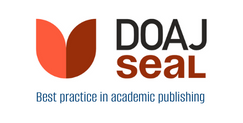Article | Open Access
Accountability Issues, Online Covert Hate Speech, and the Efficacy of Counter‐Speech
| Views: | 1777 | | | Downloads: | 1780 |
Abstract: Concerning individual or institutional accountability for online hate speech, research has revealed that most such speech is covert (veiled or camouflaged expressions of hate) and cannot be addressed with existing measures (e.g., deletion of messages, prosecution of the perpetrator). Therefore, in this article, we examine another way to respond to and possibly deflect hate speech: counter-speech. Counter-narratives aim to influence those who write hate speech, to encourage them to rethink their message, and to offer to all who read hate speech a critical deconstruction of it. We created a unique set of parameters to analyze the strategies used in counter-speech and their impact. Upon analysis of our database (manual annotations of 15,000 Twitter and YouTube comments), we identified the rhetoric most used in counter-speech, the general impact of the various counter-narrative strategies, and their specific impact concerning several topics. The impact was defined by noting the number of answers triggered by the comment and the tone of the answers (negative, positive, or neutral). Our data reveal an overwhelming use of argumentative strategies in counter-speech, most involving reasoning, history, statistics, and examples. However, most of these argumentative strategies are written in a hostile tone and most dialogues triggered are negative. We also found that affective strategies (based on displaying positive emotions, for instance) led to a positive outcome, although in most cases these narratives do not receive responses. We recommend that education or training—even machine learning such as empathetic bots—should focus on strategies that are positive in tone, acknowledging grievances especially.
Keywords: accountability; argumentative strategies; counter‐speech; covert hate speech; emotional appeal
Published:
Issue:
Vol 11, No 2 (2023): Hate Speech, Demonization, Polarization, and Political Social Responsibility
© Fabienne Baider. This is an open access article distributed under the terms of the Creative Commons Attribution 4.0 license (http://creativecommons.org/licenses/by/4.0), which permits any use, distribution, and reproduction of the work without further permission provided the original author(s) and source are credited.




